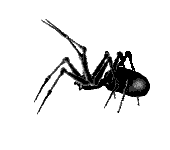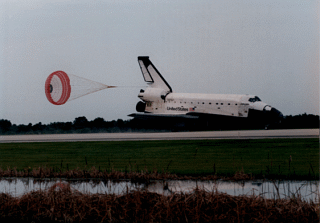Spiders in Space


 SPIDERS RETURN TO SPACE
SPIDERS RETURN TO SPACE

Newsflash February 3, 2003: On February 1, Columbia's STS-107 failed to land. Although the STARS datalink was available during the mission for everyone on the Internet to watch the spiders, the link no longer appears to work. I'll let you know whether or not the link will be restored as soon as I know.
Newsflash January 2003: After repeated delays, looks like the liftoff of STS-107 will be a go!
Newsflash December 17, 2000: Due to the launch delays for the Space Station, the spiders are now due to launch in October, 2001.
Newsflash October 31: Congratulations to Lachlan Thompson and Shanna Rudov-Clark of RMIT  and Patrick Honan of the Royal Melbourne Zoo
and Patrick Honan of the Royal Melbourne Zoo ![]() , (and me) on the winning proposal "Spiders in Space" - The effect of micro-gravity on spider behaviour and web properties. The spiders are due for lift-off on the shuttle in December 2000!
, (and me) on the winning proposal "Spiders in Space" - The effect of micro-gravity on spider behaviour and web properties. The spiders are due for lift-off on the shuttle in December 2000!

A clinostat is basically like a slow moving window fan (or a very slow centrifuge on its side) with spiders placed in containers where the blades would be. Although the clinostat does not truly mimic weightlessness, it makes it so the spiders do not have a definite down. The spiders either have to continually move to maintain the same orientation or else they hold on and their bodies change position with the rotation (like being stuck on the spoke of a Ferris wheel). Even though clinorotation is not the same as weightlessness, studies have shown that there is often a correlation between how an organism behaves when clinorotated and how it behaves in weightlessness.
House spiders (Achaearanea tepidariorum) have been used for the ground based study because the best way to verify the ground based results will be to fly the spiders in space. This means the spiders must be capable of adjusting to spaceflight conditions. House spiders have several advantages that make them suitable for a space flight. They are available year-round, have relatively long lives, don't require a water supply, and are well-adapted to environmental conditions favored by humans.
So far, it looks like clinorotated spiders are pretty adaptable -- they can spin normal webs, capture prey in the usual manner, molt, produce healthy egg sacs, and survive as well as control spiders. They do not, however, exhibit a preference for body orientation. For example, a garden spider usually hangs head-down in a web and a house spider usually hangs back-down. A spider in a clinostat does not orient its head or back in any particular direction.

Since spiders are so adaptable, it might seem that they would not make very interesting subjects for a spaceflight. It is this adaptability that actually makes them so interesting, since a study of how a spider's body adjusts to weightlessness may provide clues about how more complex organisms (like humans) adapt. Animals related to spiders have been in space (flies, beetles, shrimp, hornworms), so a comparison of data from spiders to data from these animals might provide some clues about evolution of arthropods with respect to each other. Spider silk properties are affected by spider weight, so weightless spiders might spin some interesting silk.


I have also been looking at the effects of magnetic fields on the house spiders and also on orb-weaving spiders (Argiope aurantia, Araneus cornutus, and others). This is relevant to gravitational biology because spaceflight experiments are generally very compact and often close to wiring. Although the induced electromagnetic fields generated through the wiring are probably small (the geomagnetic field isn't very big either), it is possible that changes in a spider's behavior/web structure could erroneously be attributed to microgravity when the electromagnetic field is really the cause or significant factor.
Some spiders spin webs with a north-south asymmetry (check it out sometime). Although it is sometimes thought that this asymmetry is a response to polarized light, it is also possible the geomagnetic field plays a part. So far, no response to a magnetic field has been seen from the house spiders, but the interesting study will be on the orb-weaving spiders. I'll let you know what I find out.